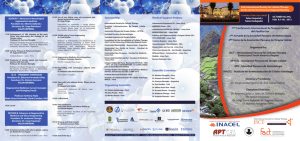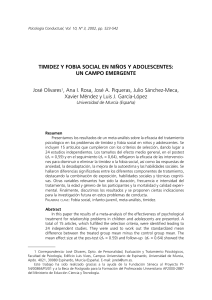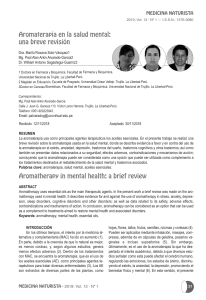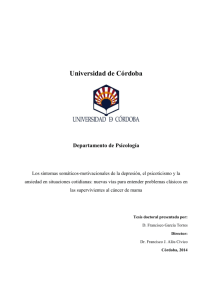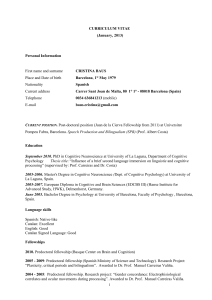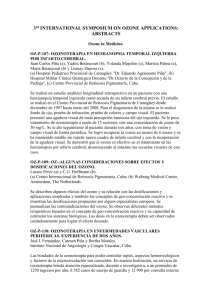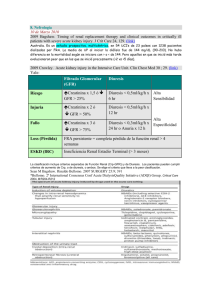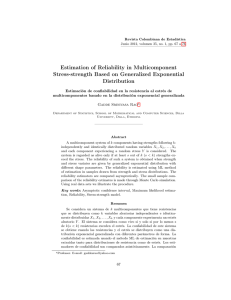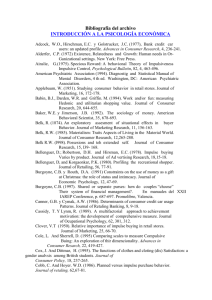Referencias Bibliográficas de este artículo
advertisement
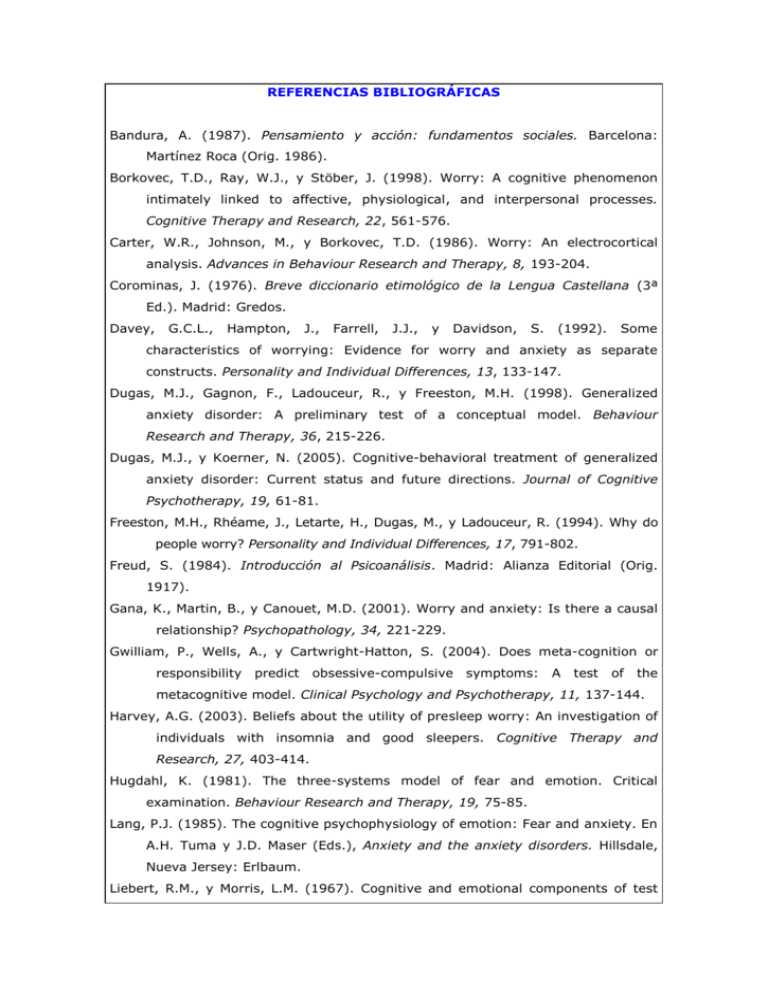
REFERENCIAS BIBLIOGRÁFICAS Bandura, A. (1987). Pensamiento y acción: fundamentos sociales. Barcelona: Martínez Roca (Orig. 1986). Borkovec, T.D., Ray, W.J., y Stöber, J. (1998). Worry: A cognitive phenomenon intimately linked to affective, physiological, and interpersonal processes. Cognitive Therapy and Research, 22, 561-576. Carter, W.R., Johnson, M., y Borkovec, T.D. (1986). Worry: An electrocortical analysis. Advances in Behaviour Research and Therapy, 8, 193-204. Corominas, J. (1976). Breve diccionario etimológico de la Lengua Castellana (3ª Ed.). Madrid: Gredos. Davey, G.C.L., Hampton, J., Farrell, J.J., y Davidson, S. (1992). Some characteristics of worrying: Evidence for worry and anxiety as separate constructs. Personality and Individual Differences, 13, 133-147. Dugas, M.J., Gagnon, F., Ladouceur, R., y Freeston, M.H. (1998). Generalized anxiety disorder: A preliminary test of a conceptual model. Behaviour Research and Therapy, 36, 215-226. Dugas, M.J., y Koerner, N. (2005). Cognitive-behavioral treatment of generalized anxiety disorder: Current status and future directions. Journal of Cognitive Psychotherapy, 19, 61-81. Freeston, M.H., Rhéame, J., Letarte, H., Dugas, M., y Ladouceur, R. (1994). Why do people worry? Personality and Individual Differences, 17, 791-802. Freud, S. (1984). Introducción al Psicoanálisis. Madrid: Alianza Editorial (Orig. 1917). Gana, K., Martin, B., y Canouet, M.D. (2001). Worry and anxiety: Is there a causal relationship? Psychopathology, 34, 221-229. Gwilliam, P., Wells, A., y Cartwright-Hatton, S. (2004). Does meta-cognition or responsibility predict obsessive-compulsive symptoms: A test of the metacognitive model. Clinical Psychology and Psychotherapy, 11, 137-144. Harvey, A.G. (2003). Beliefs about the utility of presleep worry: An investigation of individuals with insomnia and good sleepers. Cognitive Therapy and Research, 27, 403-414. Hugdahl, K. (1981). The three-systems model of fear and emotion. Critical examination. Behaviour Research and Therapy, 19, 75-85. Lang, P.J. (1985). The cognitive psychophysiology of emotion: Fear and anxiety. En A.H. Tuma y J.D. Maser (Eds.), Anxiety and the anxiety disorders. Hillsdale, Nueva Jersey: Erlbaum. Liebert, R.M., y Morris, L.M. (1967). Cognitive and emotional components of test anxiety: A distinction and some initial data. Psychological Reports, 20, 975978. Lunger, R., y Page, J.D. (1939). Worries of college freshmen. Journal of Genetic Psychology, 54, 457-460. McKay, D. (2005). Studies in cognitive processing during worry. Cognitive Therapy and Research, 29, 359-376. Prados, J.M. (2002). La preocupación: teoría e intervención. Madrid: Universidad Complutense. Prados, J.M. (2005). Pensamiento y emoción: el uso científico del término preocupación. Ansiedad y Estrés, 11, 37-48. Saleeby, C.W. (1907). Worry. Nueva York: Frederic Stokes. Spielberger, C.D. (1985). Anxiety, cognition and affect. En A.H. Tuma y J. Maser (Eds.), Anxiety and anxiety disorders (pp. 175-182). Hillsdale, Nueva Jersey: Erlbaum. Thayer, J.F., Friedman, B.H., Borkovec, T.D., Johnsen, B.H., y Molina, S. (2000). Phasic heart period reactions to cued threat and nonthreat stimuli in generalized anxiety disorder. Psychophysiology, 37, 361-368. Wells, A., y Carter, K. (2001). Further tests of a cognitive model of generalized anxiety disorder: Metacognitions and worry in GAD, panic disorder, social phobia, depression and nonpatients. Behavior Therapy, 32, 85-102. Wells, A. (2005). The Metacognitive Model of GAD: Assessment of Meta-Worry and relationship with DSM-IV Generalized Anxiety Disorder. Cognitive Therapy and Research, 29, 107-121. Wenzlaff, R., y Wegner, D.M. (2000). Thought suppression. Annual Review of Psychology, 51, 59-91.
